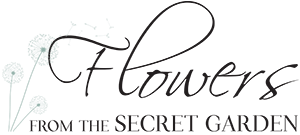
Given that autumn is one of my favourite seasons in the garden as the autumnal tones of russet, purple, reds and oranges make their dramatic arrival I decided to take some images of spectacular examples within the garden centre. For some reason I was drawn to the fiery reds as you can see.
Liquidamber. styraciflua (sweet gum) in the image above is a deciduous tree which grows to 20m tall, broadly conical in outline, with rather glossy, maple-like, 5 to 7-lobed leaves which turn to shades of orange, crimson and purple in autumn. This tree is well suited to exposed sites but must be grown on lime-free soil in sun or partial shade.

Enkianthus campanulatus Renowned for its autumn colour, this spreading, deciduous shrub actually has two seasons of interest. In early summer it produces clusters of delicate, bell-shaped, cream to pink flowers with darker pink margins. In autumn, the oval, mid green leaves turn flaming shades of orange and red.

Rhus typhina (stag’s horn sumach) An upright, deciduous shrub or small tree with finely-cut dark green leaflets turning spectacular shades of orange-red in autumn.

Euonymus europaeus ‘Red Cascade’ a large, deciduous shrub with dark-green leaves turning bright red in autumn.

An ideal specimen tree or windbreak for sheltering exposed and larger gardens. The large, lobbed, rich green leaved turn a magnificent ruby red or yellow and brown in autumn. Makes a superb specimen for large gardens.

The Japanese maple is grown mainly for its spectacular autumn colour, perhaps the best of all the maples. It has an open habit, and its large, seven-lobed, bright green leaves turn brilliant scarlet in autumn and last for several weeks. It prefers a sheltered, shady spot, and looks dramatic silhouetted against a tall hedge or modern building.
There are many more examples but they will have to wait for another day…..it may have to be fruits with autumn colour as the grape vine and blueberry bush immediately jump to mind.

These are really beautiful – will any of them colour up nicely in the shade?
Thank you. The Euonymus and Enkianthus will take partial shade whereas the Rhus is better placed in full sun to obtain its best autumn colour.
As an autumn fan too I really enjoyed this post and I’ll point my Plant ID class in its direction as will be handy for them to refer to 🙂
Thanks for that Dee. A different kind of post,but feel the images work well.